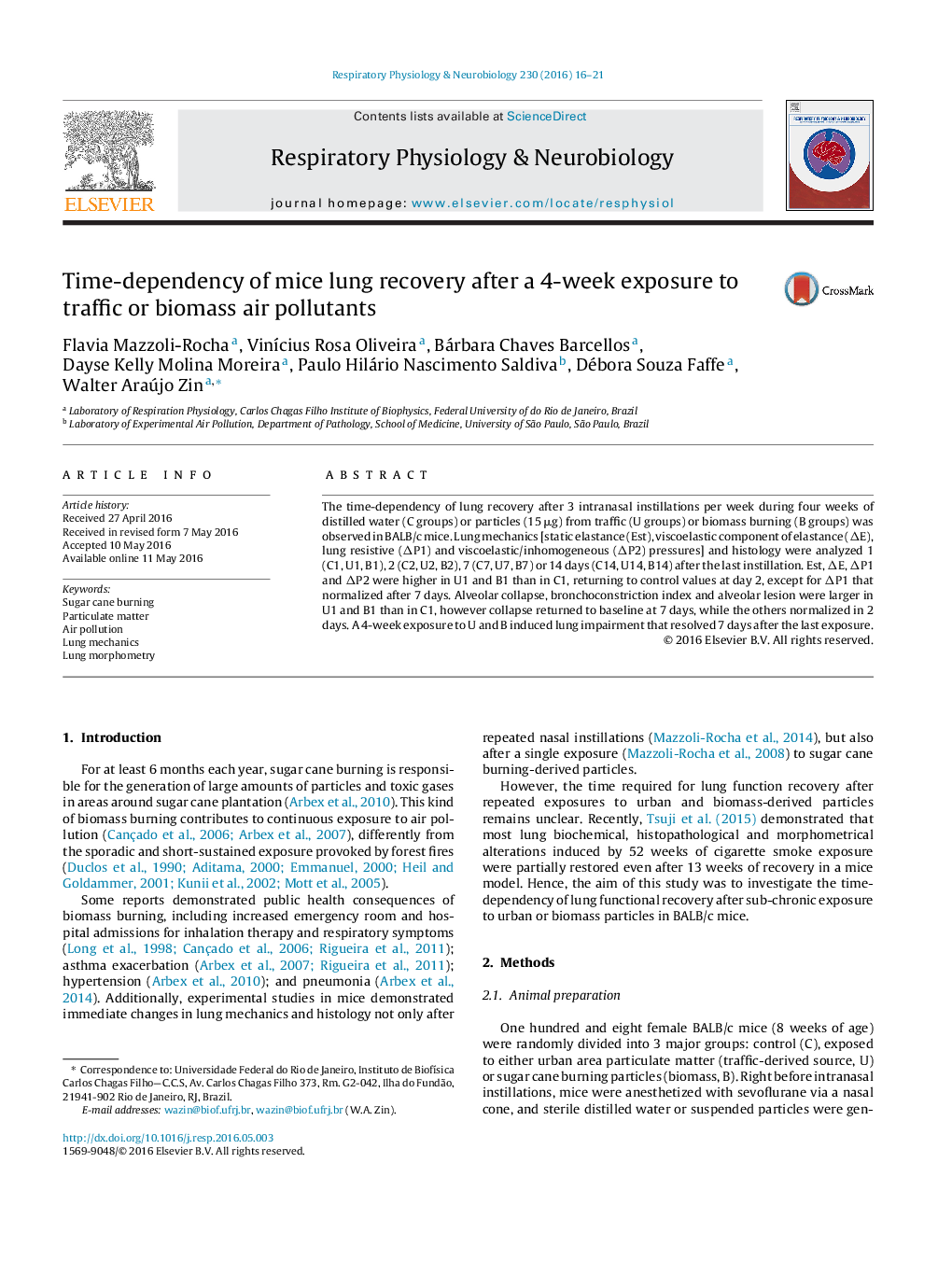| Article ID | Journal | Published Year | Pages | File Type |
|---|---|---|---|---|
| 2846647 | Respiratory Physiology & Neurobiology | 2016 | 6 Pages |
•BALB/c mice were exposed for 4 weeks to urban (U) or biomass burning (B) particles.•U, B and control groups were studied 1, 2, 7 or 14 days after the last instillation.•Lung mechanics and morphology returned to normal at day 7 after the last exposure.•No remodeling process was observed throughout the experiment.•Association between lung function and morphology were observed in U and B groups.
The time-dependency of lung recovery after 3 intranasal instillations per week during four weeks of distilled water (C groups) or particles (15 μg) from traffic (U groups) or biomass burning (B groups) was observed in BALB/c mice. Lung mechanics [static elastance (Est), viscoelastic component of elastance (ΔE), lung resistive (ΔP1) and viscoelastic/inhomogeneous (ΔP2) pressures] and histology were analyzed 1 (C1, U1, B1), 2 (C2, U2, B2), 7 (C7, U7, B7) or 14 days (C14, U14, B14) after the last instillation. Est, ΔE, ΔP1 and ΔP2 were higher in U1 and B1 than in C1, returning to control values at day 2, except for ΔP1 that normalized after 7 days. Alveolar collapse, bronchoconstriction index and alveolar lesion were larger in U1 and B1 than in C1, however collapse returned to baseline at 7 days, while the others normalized in 2 days. A 4-week exposure to U and B induced lung impairment that resolved 7 days after the last exposure.
